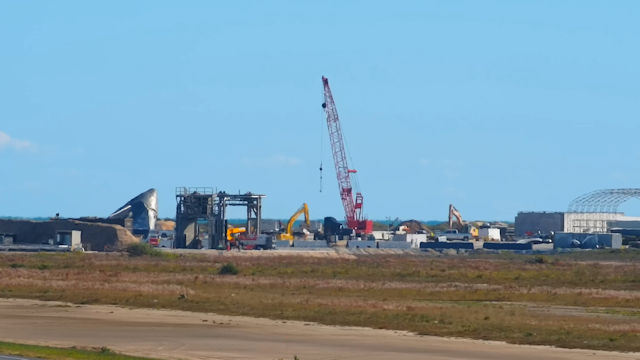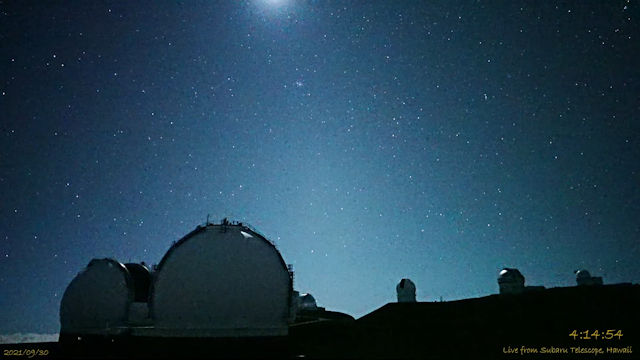We’re aware of an issue with this stream

SpaceX Launchpad Webcams in Boca Chica
Watch the crafts being built, being tested and then prepare for the blast off. You’ll see it all on these live feeds from the SpaceX Launchpad webcams.
SpaceX is a private company specializing in space transport. It’s a noisy business so the launchpads are in Boca Chica which is a remote location in the deserts of Texas. Check out the Predator feed and you’ll notice there are a few wild beasties totally unphased by the noise of space engineering.
Whether they’re communications satellites, an astronaut-carrying spacecraft, or an internationally manned space station, what goes up usually must come down, but sad to say, landings are never as precise as take-offs.




 34°C / 93°F
34°C / 93°F





 Local Time
Local Time  Temp -1°C / 30°F
Temp -1°C / 30°F







Nerdle Cam at SpaceX Launch Facility
Is the OLIT tower leaning to the right?
SimonFastEddy
Great stuff can`t wait for the launch of Starship will keep watching for the day you make the massive update in space travel with reusable equipment.
Musk has noted that Mars has all elements for making fuel (H2O underground and in polar caps, CO2 in the atmosphere). So that given enuff electric power, a good chemical engineer can make methane CH4 and lox O2 to refuel the ships for return trips. Seems a small nuclear power plant would be the only way to get plenty of kilowatts to make fuel and air to breath on board and in any colony buildings. Solar may be too weak at that distance? Are small reactors what is planned?
If fusion is ever harnessed, the methalox rocket will join the stagecoach in the Smithsonian. We will be on our way to Proxima before the paint is dry on the Mars colony!
Godspeed to you Mr. Musk!
Just saw a piece on Voyager, one of the fastest craft ever built by man, still flying for 45 years now. And now exiting the S.S. into interstellar space. But its radio is still working, albeit feebly with its atomic battery fading, it still answers the phone call from Earth at a distance of 20 light hours from us.
Just think, 45 years and it has not quite traveled one full light day from home! Let alone 365 light days to make a light year. So, it would take 66,000 years to get to Alpha Centauri, the closest star.
We gotta go faster, much much faster!
Just read that Parker Solar probe holds the record for fastest human craft up to now. It skims the surface of our sun for brief sorties in the fire before it gets singed and escapes to cooler higher orbits, at 400,000 mph.
So, Parker could at that speed get to Alpha Centauri in about 1,700 years. Still a long time!
We gotta go so much faster!
Just watched a Q&A of Musk at a European conference with a French guy asking him audience questions. Musk gave at least one motive for going Mars as making sure that humanity will survive the next catastrophe like the dinosaurs suffered 60 million years ago.
He also seems to fear that we may be the only thinking beings in the galaxy. So, we must protect that lone flame of consciousness. I would agree because 60 years of radio astronomy has not recorded even one non-natural radio signal yet and we are able to pick up weak stuff at even 1,000 LY. So, he asks as did Fermi: “Where are they?”
I fear the answer lies in the astonishingly unlikely chance that DNA will form in the first place. I guess it at one in a trillion. Maybe that’s why only one DNA underlies all life on earth, despite trillions of petri dish “experiments” in every puddle on earth for a billion years, no other DNA was ever formed, just one, ours, which we share with every living plant and animal on our magnificent earth.
Just when I thought I knew something, new info (to me) pops up. Just saw a TV show on our solar system and it talked about Enceladus the moon of Jupiter or Saturn? It suggests that the moon is an ice ball with a planetary ocean (of water I think?) under the ice and maybe life could form in that ocean. What if smart life evolved there or on millions of similar moon/planets in the galaxy? We know the whales and dolphins here are pretty smart, maybe smarter than us? But they will never develop technology underwater, and even if they could make a radio work under water, the signals would not get thru the ocean and broadcast into space. So, if there are smart aquatic beings out in space, we will never pick up any signals from them. Another answer for Fermi to consider?